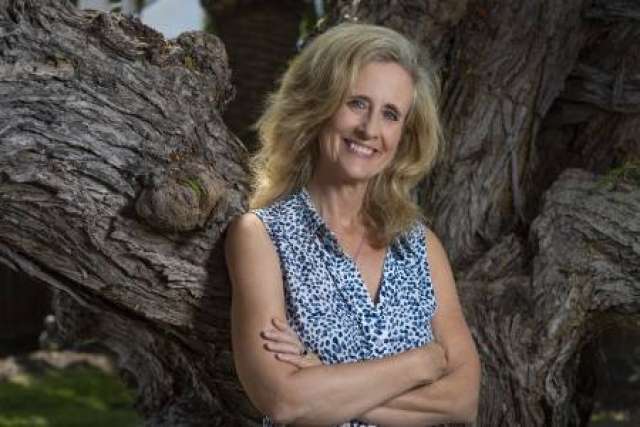American youth are experiencing such a profound crisis of mental health, it requires an “all-of-society effort” to address, according to U.S. Surgeon General Vivek Murthy, MD.
In a public advisory issued Dec. 7, Dr. Murthy calls on families, schools, employers, media and technology companies, the health care system, community organizations and government entities to engage in systemic change to support young people’s mental well-being.
The isolation and lifestyle changes brought on by the COVID-19 pandemic worsened an already alarming situation in which the proportion of high school students reporting persistent feelings of sadness or hopelessness rose by 40% from 2009 to 2019. Suicide rates among people ages 10 to 24 increased by 57% between 2007 and 2018.
“It would be a tragedy if we beat back one public health crisis only to allow another to grow in its place,” Dr. Murthy writes in the 53-page advisory titled “Protecting Youth Mental Health.”
“Mental health challenges in children, adolescents and young adults are real and they are widespread,” Dr. Murthy writes. “To be sure, this isn’t an issue we can fix overnight or with a single prescription. Ensuring healthy children and families will take an all-of-society effort, including policy, institutional and individual changes in how we view and prioritize mental health.”
Daniel Eisenberg, PhD, a professor of health policy and management at the UCLA Fielding School of Public Health, who has been studying youth mental health since 2005, says he has “rarely read a report that’s as thoughtful and as on-target as this one.”
“I especially like how it’s holistic in its approach,” says Dr. Eisenberg, principal investigator of the Healthy Minds Network for research on adolescent and young adult mental health. “It’s not just about the health care system, but it’s about the whole range of factors in a community and in society that are important for young people’s mental health.”
What is mental health?
Mental health comprises an individual’s social, emotional and psychological well-being. It affects every aspect of our lives, from how we feel about ourselves to how we cope with stress, connect with others and show up at work, school and in our communities.
An essential component of overall health, mental health is shaped by biological and environmental factors, so both genetic background and life experiences contribute.

Society plays a significant role, as well, since discrimination, poverty, media and access to resources have been shown to impact psychological well-being. And certain sub-populations may be more vulnerable than others. For example, children growing up in poverty are two to three times more likely to develop mental health conditions than their more economically advantaged peers, according to the surgeon general’s report; and Black children are nearly twice as likely to die by suicide as white children.
Mental health conditions include anxiety disorders, major depressive disorder, schizophrenia, bipolar disorder and eating disorders, among others. These conditions are complex, and it’s often hard for individuals or their families to know the difference between a normal bout of sadness or worry and something more serious.
“It is difficult to know when to seek professional care and to identify exactly what’s going on and what’s needed,” Dr. Eisenberg says.
Challenges facing children
The way COVID-19 altered lives, routines, schooling and socializing has had a significant influence on youth mental health. A global study found that symptoms of anxiety and depression doubled among young people during the pandemic. Data from early 2021 show that, in the U.S., emergency department visits for suspected suicide attempts increased 51% for adolescent girls and 4% for adolescent boys compared to 2019.
It wasn’t just the pandemic that challenged well-being over the past two years. There was the 2020 murder of George Floyd by police that spawned a national racial reckoning; a rash of hate crimes against Asian-Americans; inflammatory political discourse; and troubling and divisive misinformation spread online.
“There are plenty of other important trends in society that probably are playing a role, like increased concerns about climate change and polarization of society socially and politically,” Dr. Eisenberg says. “And the reduced sense of safety in schools with all the violence that’s occurred. Schools are having to do safety exercises related to having a potential active shooter, and while that might increase safety, it wouldn’t be surprising that it also creates anxiety among some young people.”
The stressors noted in the surgeon general’s advisory echo observations made by the American Academy of Pediatrics, says Melissa Brymer, PhD, PsyD, a pediatric psychologist with UCLA Health and a leader of the National Child Traumatic Stress Network. That group held a summit in July looking at five specific areas affecting youth well-being: grief and loss related to the pandemic; the school experience; substance use and suicidal ideation; maltreatment and interpersonal violence; and health disparities.

“We’re seeing different providers in different states talking about this,” Dr. Brymer says. “This is happening nationwide.”
Other risk factors exacerbated by COVID-19, according to the surgeon general’s report, include worries about the virus; having parents or caregivers who contracted COVID-19, are frontline workers or who may be experiencing burnout; addressing health disparities; experiencing additional traumas or losses; living in an area with more severe virus outbreaks; and experiencing greater financial instability, food shortages or housing instability.
The report notes that children with intellectual or developmental disabilities, racial and ethnic minority youth, young people living in low-income or rural areas and those who identify as LGBTQ++ are at higher risk of mental health challenges, particularly during the pandemic.
How to support youth mental health
The bulk of the surgeon general’s report offers detailed guidance about how various sectors of society can work to support and encourage psychological and emotional well-being in young people. The first step is recognizing that mental health is integral to overall health.
“People experiencing mental health challenges deserve support, compassion and care, not stigma and shame,” the advisory says. “Mental health is no less important than physical health. And that must be reflected in how we communicate about and prioritize mental health.”
This is critical for all members of society, the report says. Not only can adults model healthy behaviors for young people, but mentally healthy adults are better equipped to notice behavior changes in others and respond with care and support.
The advisory encourages young people to ask for help when they are struggling, to take care of themselves mentally and physically and to be intentional about their use of technology, especially social media and video games. It calls on family members to encourage these behaviors in the young people they care for and to practice them themselves. It also stresses the importance of regular checkups with a health care professional for both children and caregivers.
Schools and educators are asked to make mental health care a greater priority, to expand mental health staffing and support the overall wellness of all school personnel. Community organizations are encouraged to do the same, as well as increase education and outreach about mental health programs and services.
The advisory includes guidance for entertainment media and journalists, encouraging storytelling that avoids using stereotypes or demeaning language to describe mental health conditions. It suggests that violent and distressing news footage should be shown cautiously so viewers might have a chance to opt out before seeing it, and urges stories depicting mental health challenges or suicide to include links to resources to help those who may be suffering.
The report’s suggestions for tech companies go even further, calling for greater transparency about the algorithms that promote content and positioning social responsibility and care for users’ mental health as priorities over profit.
“Most importantly, technology companies must step up and take responsibility for creating a safe digital environment for children and youth,” the advisory says.
There are also guidelines offered for health care institutions, nonprofit foundations, employers and government agencies.
The comprehensiveness of the response required to address this crisis can be overwhelming, Dr. Brymer says. She suggests starting small and exploring some of the many resources highlighted in the advisory. UCLA’s Semel Institute for Neuroscience and Human Behavior also offers free community resources to support mental health.
“If you go to the aspect of the report that’s most meaningful for you, then it’s a little less daunting,” she says. “Consider if there are one or two things you can start implementing in the new year with your organization, the teams you work with or in your family.”
The holidays also represent a key opportunity to express gratitude and belonging, as well as to acknowledge loss, Dr. Brymer says.
“This is a time to make sure that we call attention to eliminating stigma around reaching out for help. We need to make sure we take care of one another,” she says.
“One of the most protective factors is when we feel a sense of belonging — belonging with our families, our schools, our workplaces. The pandemic prevented some of that belonging-ness when we were all separated. So are we making those efforts to say, ‘We care about you. You matter. So if you’re struggling, let’s help get you the support that you need.’ That’s an important message for everyone right now.”
Learn more about the programs available at the Jane and Terry Semel Institute for Neuroscience and Human Behavior



